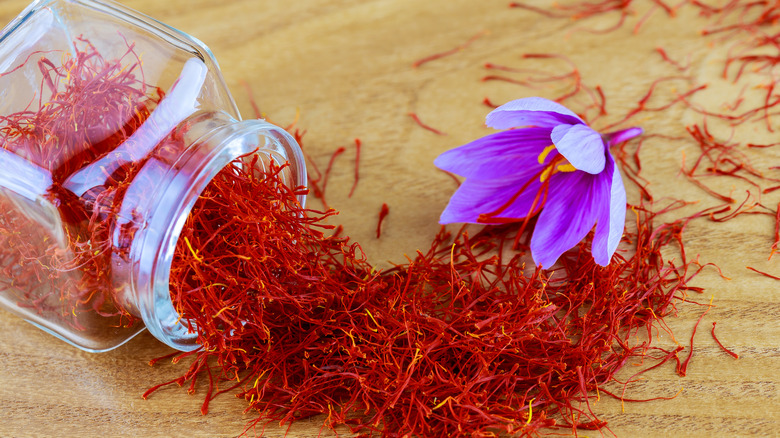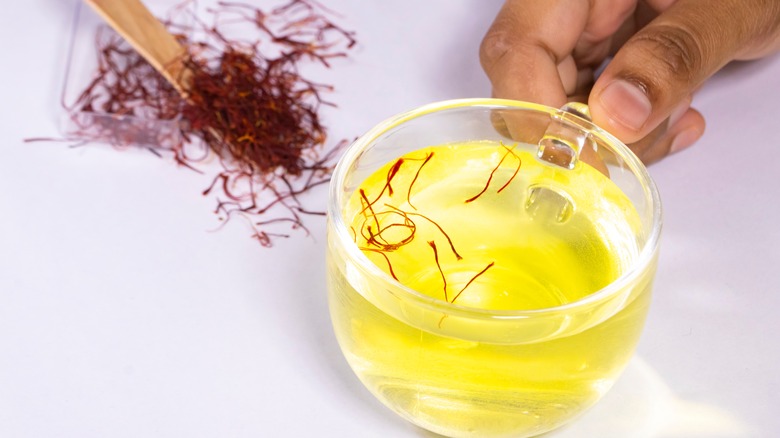How To Spot The Difference Between Real And Fake Saffron
If you're making paella and you reach for a bottle of saffron, you could be grabbing something that's exceedingly valuable, costing more than $5,000 per pound. Or you could be reaching for something fake. Yes, it's not uncommon for the spice labeled as saffron to be something other than the fragrant spice that's been traded and sought after for thousands of years.
Real saffron comes from a single variety of crocus – Crocus sativus, or the autumn crocus. Each bloom contains three slender, crimson-colored stigmas, which must be carefully harvested and dried to preserve the delicate structure and flavor of the spice. It takes roughly 170,000 flowers to create a pound of saffron, which sets the stage for unscrupulous people who would pass off less costly materials as the precious spice. Saffron can be genuine but adulterated to make it heavier by weight, either by spraying it with water or by mixing in other substances. Or the jar you think contains saffron might contain corn silk, the stigmas of flowers other than the autumn crocus, coconut filaments, or even dyed horse hair. Fortunately, if you want to ensure that you're using genuine saffron, there's an easy way to check it.
Test your saffron by soaking it in hot water
Placing a few threads in hot water is the best way to test your saffron. Fake saffron will give up its color quickly as red dye leaches from the substance, and the threads will often disintegrate. Real saffron will color the water slowly; the water may take as long as 20 or even 60 minutes to acquire the golden hue from genuine crocus stigmas. Actual saffron threads will stay intact in water, retain their red hue, and produce an even yellow color in the water.
Perhaps more important is the difference in flavor and aroma between real and fake saffron. When infused into hot water, the real deal will have the classic earthy, floral notes you expect, while fake saffron will either lack flavor and aroma or smell and taste bitter and may even have a metallic flavor.
Once you've tested your saffron by soaking the threads in hot water, don't throw that precious liquid out! You've actually bloomed your saffron, and that flavorful infused liquid is ready to use in biryani, paella, risotto, or even in sweet recipes like Scandinavian St. Lucia buns.

